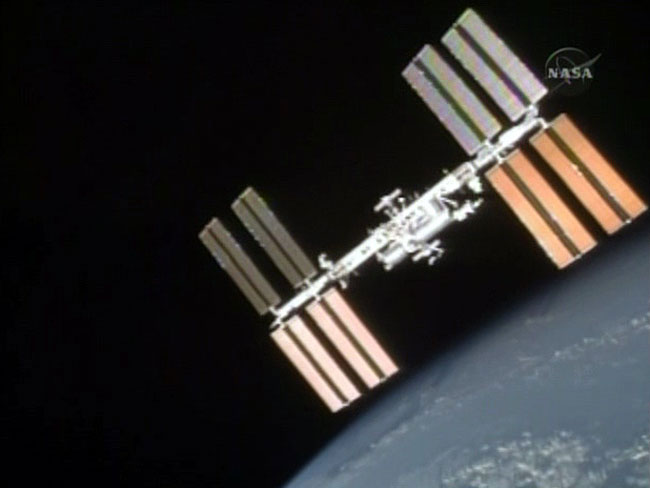Space Station to Put on Sky Show This Weekend

The International Space Station will be extra visible toobservers on Earth this weekend ? sometimes up to five times a night ? thanksto some favorable sun angles that will light up the orbiting space lab.
The space station flies about 220 miles (354 km) overhead,circling the globe once every 90 minutes. Usually, the station is invisible to skywatcherson Earth during some of those orbits because the sun isn't shining on it.
However, over the next few days, the station's path will align with Earth'sday-night terminator, keeping the spacecraft in nearly constant sunlight, accordingto the website Spaceweather.com, which monitors spacecraft sightings and spaceweather.
That means that every time it flies overhead, skywatchersgraced with clear skies should be able to spotthe space station as a moving star that can sometimes appear as bright asVenus. The rare solar line-up ends on Monday.
The station is currently home to six astronauts ? threeAmericans and three Russians. Cosmonaut commander Alexander Skvortsov is leadingthe Expedition 24 mission.
Construction on the hugespace station began in 1998 and it is now 98 percent complete. Fivedifferent space agencies and 16 countries have been working together to build the$100 billion space station, which is the largest human-made structure in space.
From end-to-end, the space station's main truss ? which servesas its metallic backbone ? is longer than a football field. The outpost'swing-like solar arrays also serve as giant reflectors when they catch sunlight,and make the space station easily visible to the unaided eye. [Howto spot satellites]
There are several ways to find out when the InternationalSpace Station may be flying over your area. Information on when the spacecraftwill be visible over your city can be found at this NASA website.
Breaking space news, the latest updates on rocket launches, skywatching events and more!
You can also find detailed viewing opportunities bysearching the Internet for one of these four popular websites:
- Chris Peat's Heavens Above
- Science@NASA's J-Pass
- NASA's SkyWatch
- Spaceweather.com
Each website will ask for your zip code or city name andrespond with a list of suggested spotting times. Predictions computed a fewdays ahead of time are usually accurate within a few minutes. However, they canchange due to the slow decay of the space station's orbit and periodic rebooststo higher altitudes. It is a good idea to check frequently for updates.
- Images - Spotting Spaceships From Earth
- Gallery - Photos of the Last Launch of Atlantis
- Wow!Shuttle and Space Station Photographed Crossing the Sun
Join our Space Forums to keep talking space on the latest missions, night sky and more! And if you have a news tip, correction or comment, let us know at: community@space.com.

Clara Moskowitz is a science and space writer who joined the Space.com team in 2008 and served as Assistant Managing Editor from 2011 to 2013. Clara has a bachelor's degree in astronomy and physics from Wesleyan University, and a graduate certificate in science writing from the University of California, Santa Cruz. She covers everything from astronomy to human spaceflight and once aced a NASTAR suborbital spaceflight training program for space missions. Clara is currently Associate Editor of Scientific American. To see her latest project is, follow Clara on Twitter.
